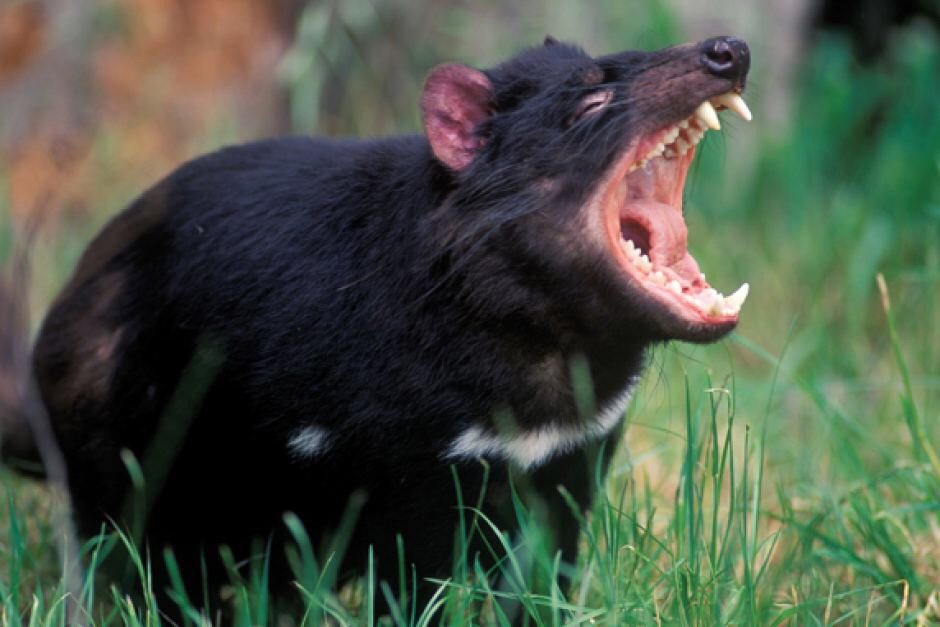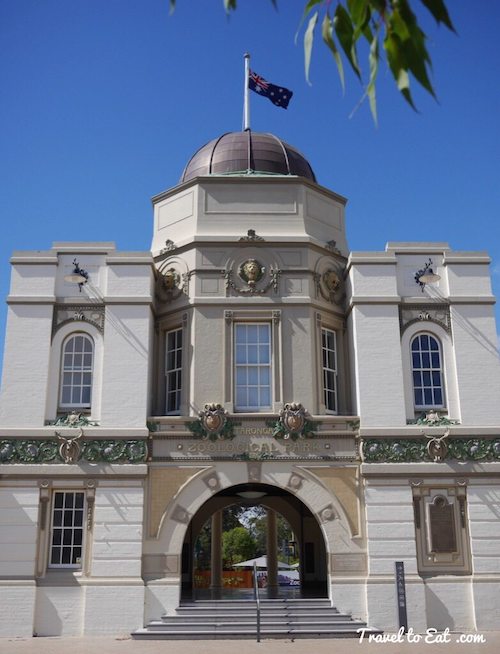
Taronga Zoo is Australia’s leading zoological garden, featuring Australia’s best collection of native animals and a diverse collection of exotic species. What makes Taronga something special is its location. It is situated on a fairly steep hill along the waterfront, on one of the most beautiful vantage points on Sydney Harbour overlooking Sydney Cove, the Harbour Bridge and the Opera House. As you zigzag your way along the paths among the animal enclosures, you are able to enjoy magnificent harbour views. The Taronga Zoo has its own jetty and you are able step off a ferry and walk directly into the zoo. From there you can take the gondola to the top of the hill, the fastest and most inexpensive way to visit the zoo. It is always best to start your tour of the Zoo from the top entrance. That way you’ll be walking downhill facing the harbor. You’ll then be continually surprised as you turn a corner and catch a different vista of the horizon. Then, when you reach the bottom you can catch the Zoo Sky Safari chair lift to take you to the top again and begin your downhill trek along a different path.
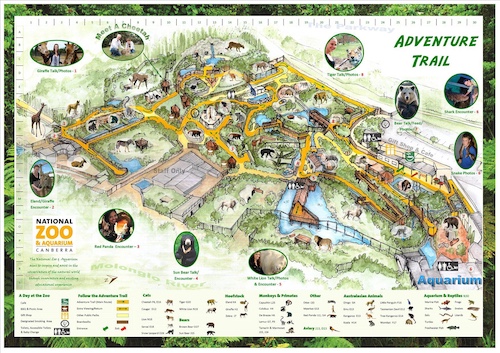
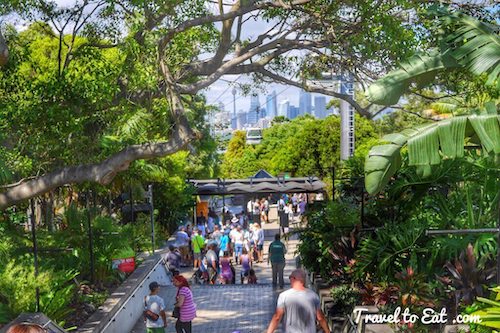
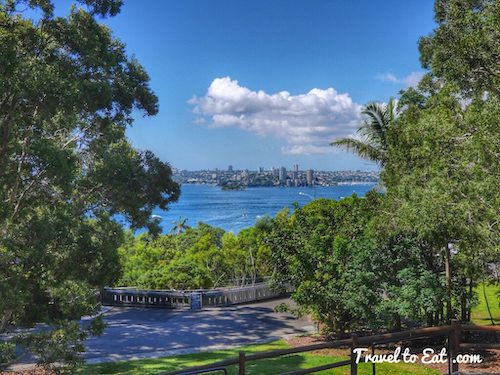
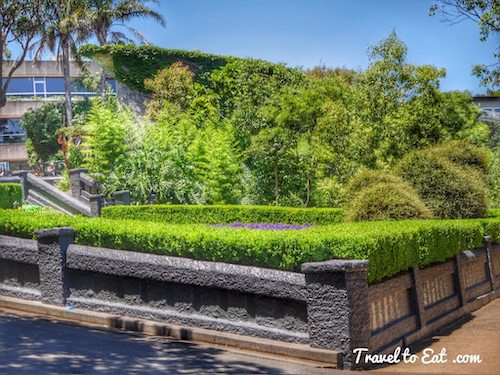
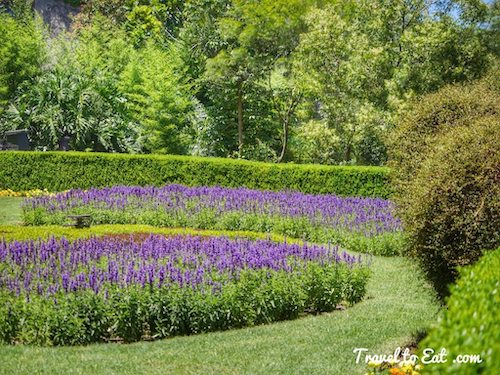
The landscaping is lush and beautiful and as advertised, the views of Sydney are pretty breathtaking. In addition there are amazing exhibitions of extremely rare and common animals in every direction. Plan to spend at least a day or more to see it all.
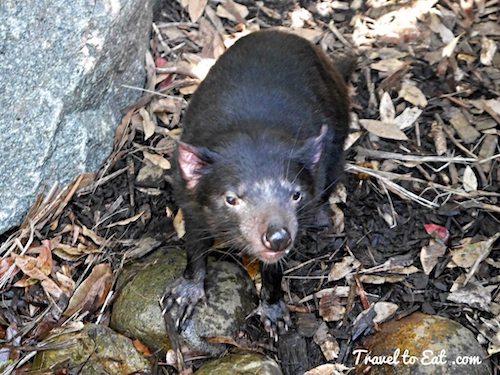
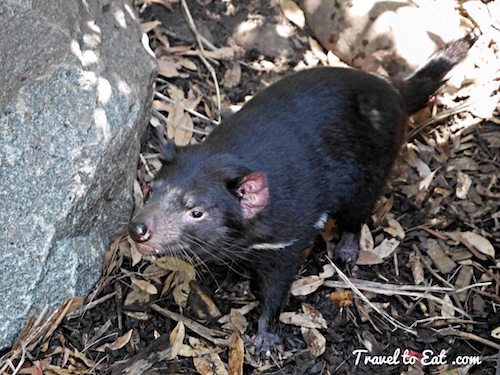
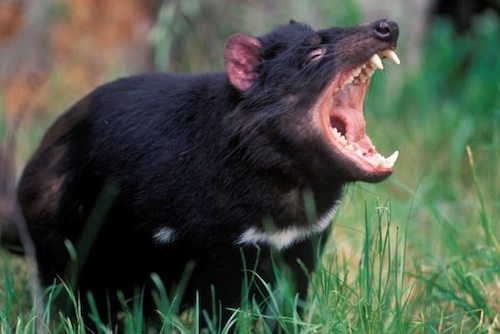
I was absolutely thrilled to get these pictures of the normally nocturnal Tasmanian Devil, he/she just decided to take a walk outside and I was lucky enough to be there. Tasmanian devils have a notoriously cantankerous disposition and will fly into a maniacal rage when threatened by a predator, fighting for a mate, or defending a meal. Early European settlers dubbed it a “devil” after witnessing such displays, which include teeth-baring, lunging, and an array of spine-chilling guttural growls. Tasmanian devils are strictly carnivorous, surviving on small prey such as snakes, birds, fish, and insects and frequently feasting communally on carrion. They are at their most rowdy when jockeying for position on a large carcass. Like other marsupials, when they are well fed, their tails swell with stored fat. Once abundant throughout Australia, Tasmanian devils are now indigenous only to the island state of Tasmania. Their Tasmanian range encompasses the entire island, although they are partial to coastal scrublands and forests. Biologists speculate that their extinction on the mainland is attributable to the introduction of Asian dogs, or dingoes.
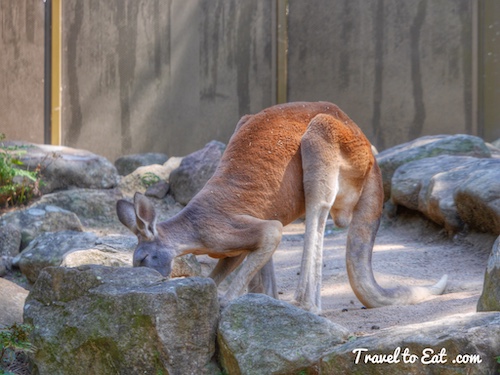
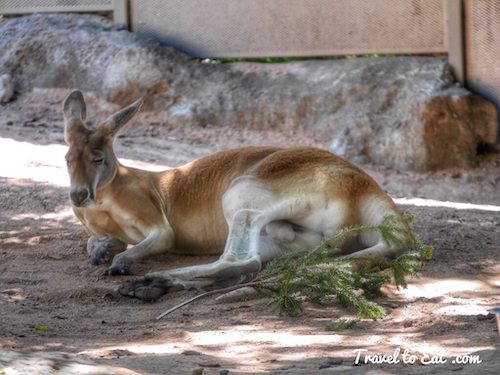
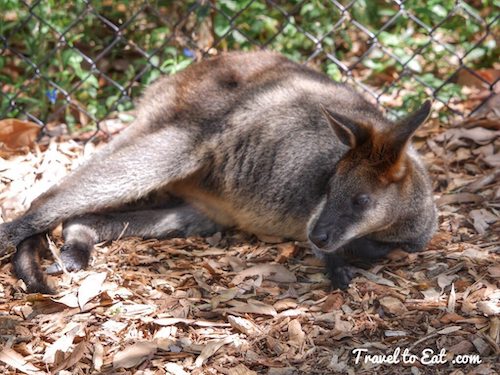
Red kangaroos (Macropus rufus) are large animals with extremely long and powerful hind legs and feet. Their tail is also long and muscular but their front limbs are short. When moving fast they hop on their hind legs, using their tail as a counterbalance, and when moving slowly they use their tail as an extra limb, taking their weight on their front limbs and tail while hopping their hind feet forwards. Their fur is soft and reddish brown (greyer in females). They have quite long muzzles and rather large ears, making their heads look a bit like those of deer. They are found across mainland Australia, avoiding only the more fertile areas in the south, the east coast, and the northern rainforests. In the zoo, you can walk among the smaller, less aggressive females while the larger males are kept in a more secure separate enclosure.
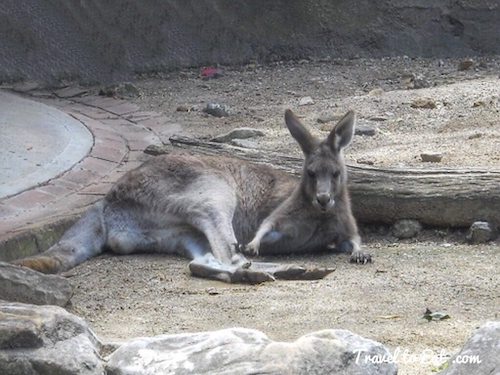
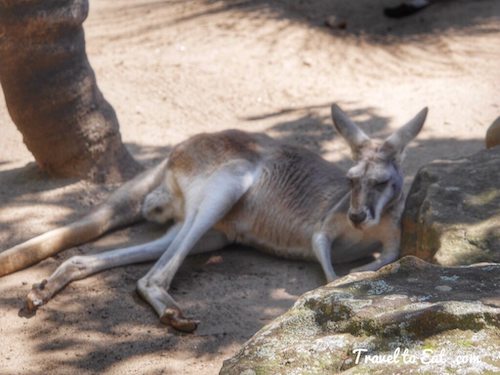
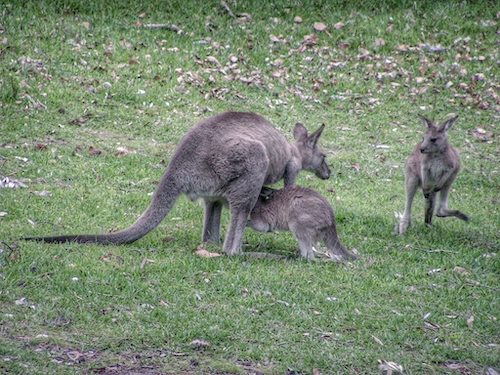
The grey kangaroo is one of the most populous of all kangaroos (with numbers in the millions) and it is also the fastest of all kangaroos, reaching speeds of up to 70kph. There are two types of grey kangaroo, eastern and western, which are pretty much the same. The eastern grey kangaroo (Macropus giganteus) is a marsupial found in southern and eastern Australia, with a population of several million. It is also known as the great grey kangaroo and the Forester kangaroo. Grey kangaroos roam the forests of Australia and Tasmania and prefer to live among the trees, though they do take to open grasslands for grazing. Grey kangaroos, red kangaroos, and wallaroos are called the great kangaroos because they are so much larger than the nearly 70 other kinds of kangaroos.
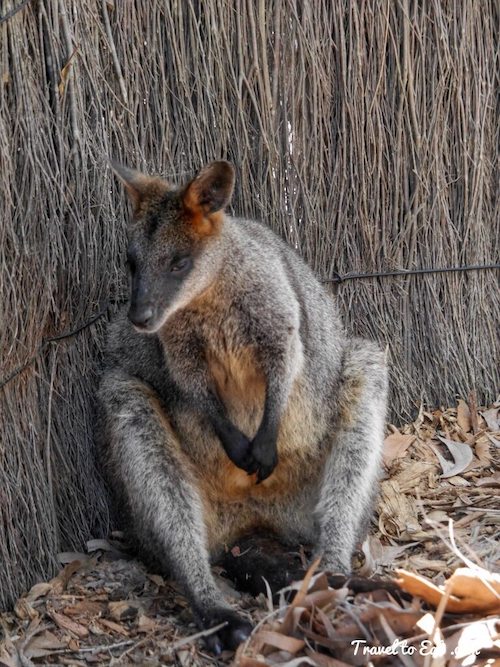
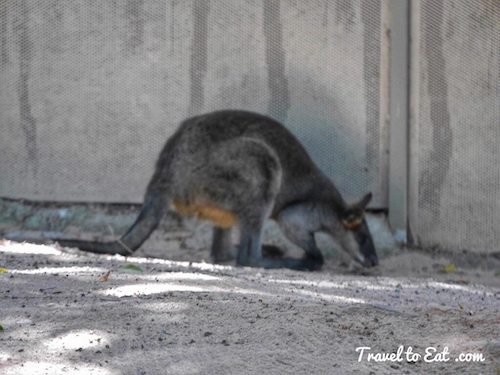
The swamp wallaby (Wallabia bicolor) is a small macropod marsupial of eastern Australia. This wallaby is also commonly known as the black wallaby, with other names including black-tailed wallaby, fern wallaby, black pademelon, stinker (in Queensland), and black stinker (in New South Wales). The swamp wallaby is the only living member of the genus Wallabia. Note the light cheek stripe. Although the swamp wallaby is solitary in nature, it will often gather in small groups when foraging. It can consume a variety of plants including both native and introduced types, agricultural, shrub, and pasture types. Its preferred diet includes browsing types of shrubs and bushes. This diet is not typical to wallaby species, which usually prefer grazing types of plants. This species is not often hunted for food or commercial reasons, because natives find it undesirable to eat and its fur is not particularly attractive.
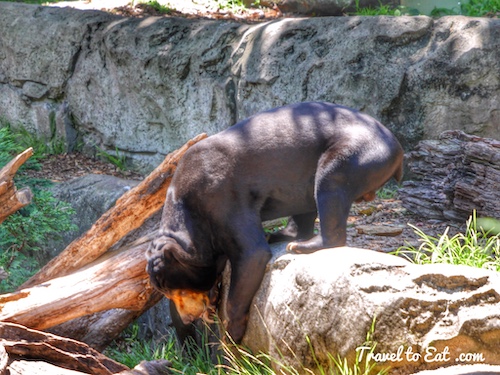
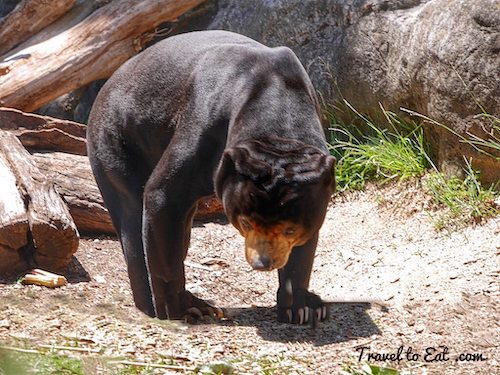
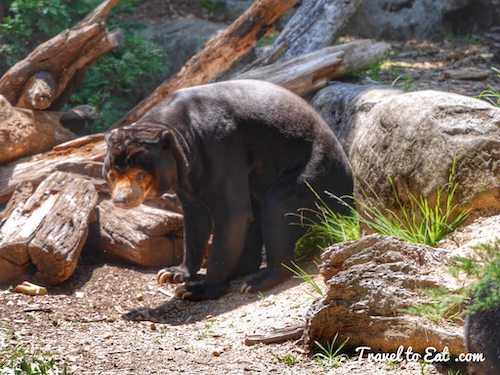
The smallest of the eight bear species, the Malayan Sun Bear inhabits the dense tropical and subtropical rainforests of South East Asia. Sun bears are expert climbers, using their long 7.5cm claws to dig into tree trunks. During feeding, the sun bear can extend its exceptionally long 20-25cm tongue into logs to extract insects and honey. While there are currently no known reliable estimates of wild sun bear numbers, it’s known that their numbers are declining. The major threat to the Malayan Sun Bear is the illegal wildlife trade, where animals are trapped for bear meat in restaurants, traditional medicine or as exotic pets, and habitat destruction, for logging and conversion to agriculture.
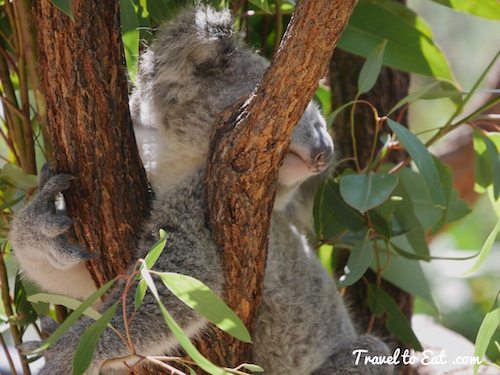
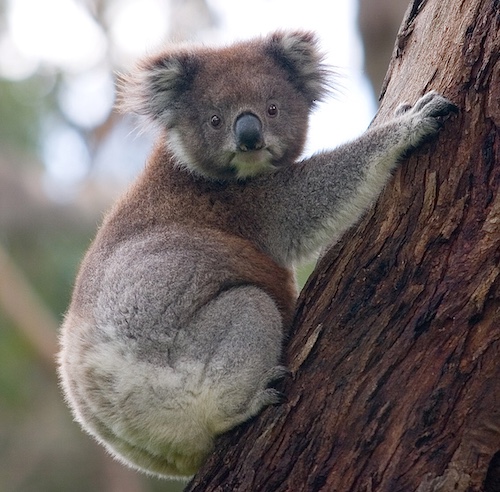
The Koala (Phascolarctos cinereus) is an arboreal herbivorous marsupial native to Australia. It is the only extant representative of the family Phascolarctidae, and its closest living relatives are the wombats. The koala is found in coastal areas of the mainland’s eastern and southern regions, inhabiting Queensland, New South Wales, Victoria and South Australia. It is easily recognizable by its stout, tailless body; round, fluffy ears; and large, spoon-shaped nose. Koalas typically inhabit open eucalyptus woodlands, and the leaves of these trees make up most of their diet. Because this eucalyptus diet has limited nutritional and caloric content, koalas are largely sedentary and sleep for up to 20 hours a day. In fact, the lazy koalas were sleeping the day we visited so I included a great shot from Wikipedia. Though often called the koala “bear,” this cuddly animal is not a bear at all; it is a marsupial, or pouched mammal. After giving birth, a female koala carries her baby in her pouch for about six months. When the infant emerges, it rides on its mother’s back or clings to her belly, accompanying her everywhere until it is about a year old. Because of its distinctive appearance, the koala is recognized worldwide as a symbol of Australia. Koalas from different parts of Australia have varying amounts of brown in their fur.
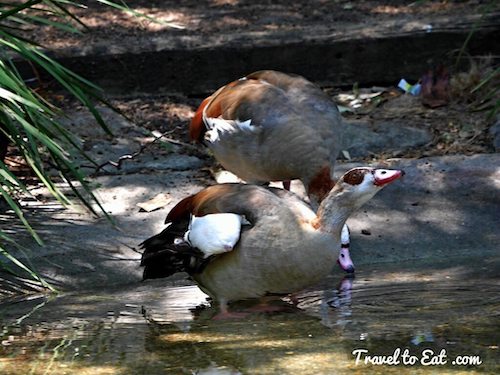
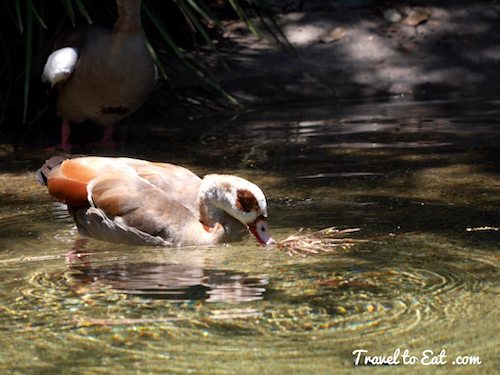
The Egyptian goose (Alopochen aegyptiaca) is a member of the duck, goose, and swan family Anatidae. It is native to Africa south of the Sahara and the Nile Valley. Egyptian geese were considered sacred by the Ancient Egyptians, and appeared in much of their artwork. They have been raised for food and extensively bred in parts of Africa since they were domesticated by the ancient Egyptians. This species breeds widely in Africa except in deserts and dense forests, and is locally abundant. They are found mostly in the Nile Valley and south of the Sahara. It has also been introduced elsewhere: Great Britain, the Netherlands, France, and Germany have self-sustaining populations which are mostly derived from escaped ornamental birds. Escapes have also bred on occasion in other places, such as Florida, Australia and New Zealand.
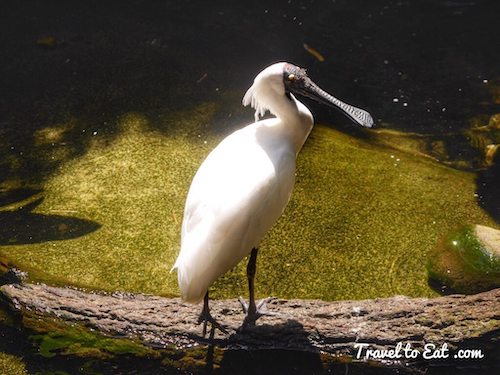
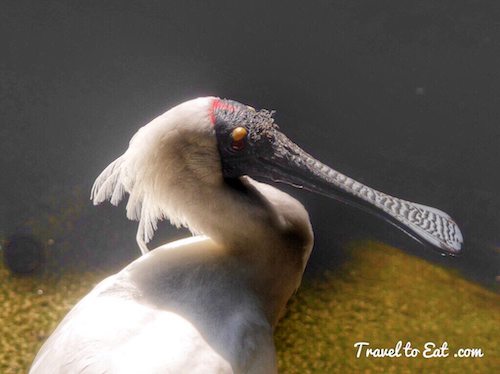
The Royal Spoonbill (Platalea regia) is a large white waterbird with a black, spatulate (spoon-shaped) bill, facial skin, legs and feet. During the breeding season, it has a distinctive nuchal (back of head or nape of neck) crest, which can be up to 20 cm long in male birds (usually shorter in females). The crest can be erected during mating displays to reveal bright pink skin underneath. Breeding adults also have a creamy-yellow wash across the lower neck and upper breast and a strip of bright pink skin along the edge of the underwings which is obvious when the bird opens its wings. The facial skin is black with a yellow patch above the eye and a red patch in the middle of the forehead, in front of the crest feathers.
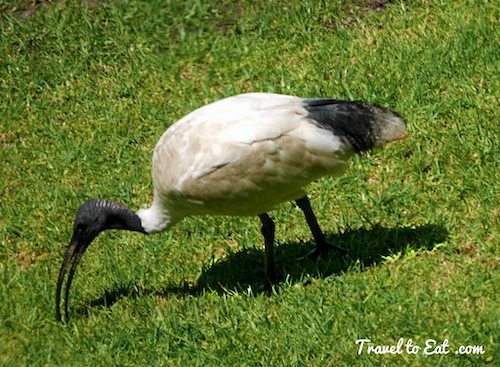
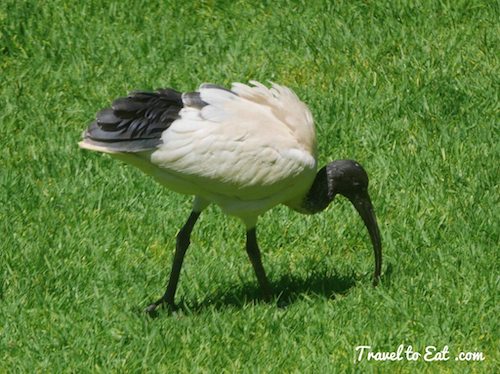
The Australian White Ibis (Threskiornis molucca) is identified by its almost entirely white body plumage and black head and neck. The head is featherless and its black bill is long and down-curved. During the breeding season the small patch of skin on the under-surface of the wing changes from dull pink to dark scarlet. Adult birds have a tuft of cream plumes on the base of the neck. Females differ from males by being slightly smaller, with shorter bills. Young birds are similar to adults, but have the neck covered with black feathers. In flight, flocks of Australian White Ibis form distinctive V-shaped flight patterns. Another common name for this bird is Sacred Ibis, but this more appropriately refers to a closely related African species, the Sacred Egyption Ibis. The Australian White Ibis is common and widespread in northern and eastern Australia, and both its range and abundance in western Australia is expanding, despite its absence from Western Australia prior to the 1950s. The species is absent from Tasmania.
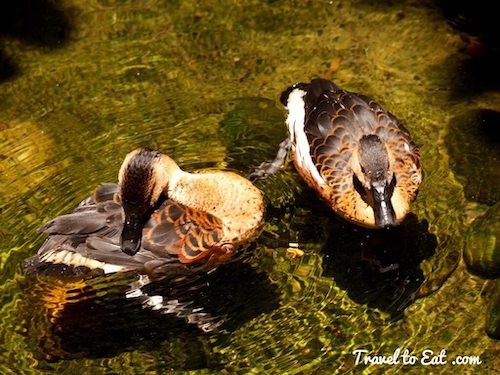
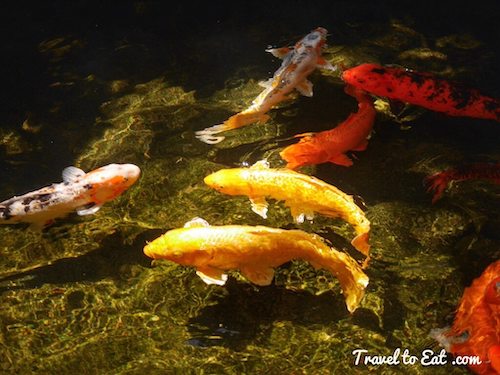
Formerly named Tree Ducks, the Wandering Whistling Duck have their new name because of their loud whistling calls and the whistling noise their wings make during flight. The Wandering Whistling-Duck is a large duck with rich red-brown plumage overall, with a paler face, front of neck and upper breast. There is a dark stripe on the crown of head, nape and back of neck. The bill and legs are dark. There are elongated flank plumes, which are off-white with chestnut edges. In flight, the dark underwings, cinnamon and chestnut underbody, white undertail and trailing dark legs are seen. This species is also known as the Whistling Tree-Duck, Water Whistling-Duck and the Red Whistler. The Wandering Whistling-Duck is found in northern and eastern Australia and prefers deep vegetated lagoons and swamps, flooded grasslands, sewerage farms, grain stubbles, pastures, irrigated lands and ricefields. It prefers deeper waters where aquatic plants and insects are plentiful. Koi are actually hybrids of Carp from Japan but they were in the same pool and lovely so I included them.
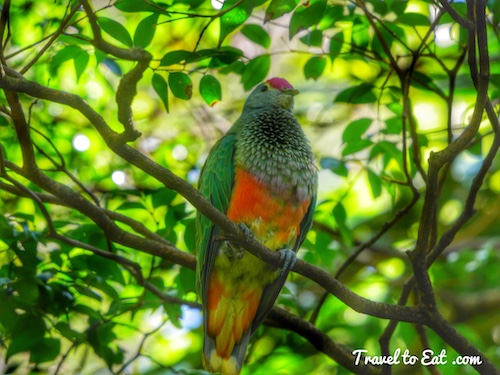
The Rose-Crowned Fruit-Dove (Ptilinopus regina) is a small, compact dove, with a short tail and rounded wings. Its name comes from the deep pink cap or forehead, which is bordered behind by a narrow yellow stripe. The upper body is bright green and the under-body orange and yellow with a rose-coloured patch. The throat and upper breast is rough grey. In flight, dark underwings contrast with the yellow body and band on the end of the tail. The female is similar, but lighter. This species is also known as Pink Cap, Rose or Red-crowned Fruit-Pigeon. Distribution:The Rose-crowned Fruit-Dove is widespread in northern and eastern Australia, they also are found in Indonesia. Rose-crowned Fruit-Doves are found in coastal tall tropical and sub-tropical forests, particularly with dense vine growth, in monsoon rainforest and tall woodlands near rainforest with many fruiting trees. They are sometimes found in mangroves.
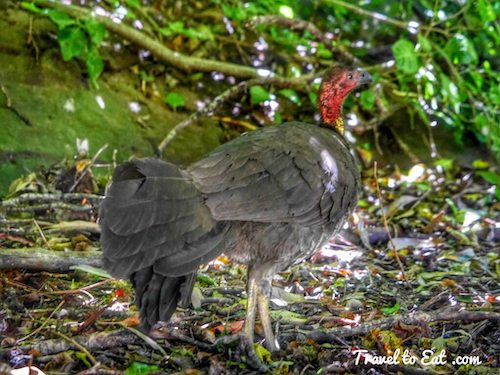
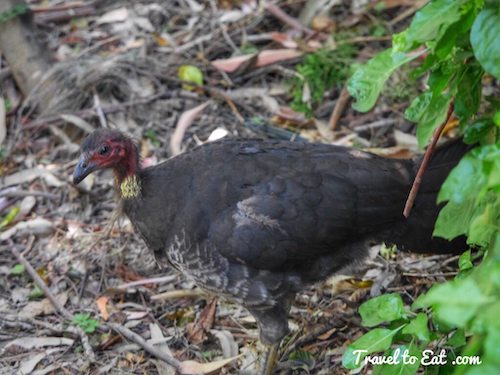
The Australian Brush-Turkey (Alectura lathami) has a mainly black body plumage, bare red head, yellow throat wattle (pale blue in northern birds) and laterally flattened tail. The Australian Brush-turkey is not easily confused with any other Australian bird. It is the largest of Australia’s three megapodes (Family Megapodiidae). The megapodes are a distinct family of the group of fowl-like birds (Order Galliformes), which includes quails, turkeys, peafowl and junglefowl. The Australian Brush-turkey’s range extends along eastern Australia, inhabiting rainforests and wet schlerophyll forests, but can also be found in drier scrubs. In the northern part of its range, the Australian Brush-turkey is most common at higher altitudes, but individuals move to the lowland areas in winter months. In the south, it is common in both mountain and lowland regions.
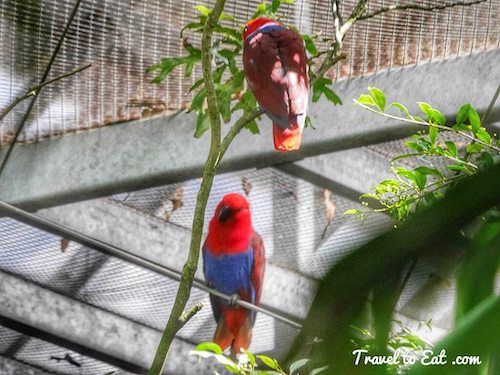
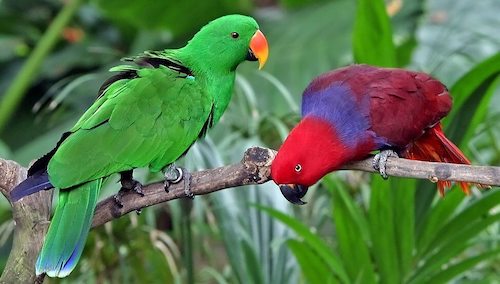
The Eclectus Parrot (Eclectus roratus) is native to the Solomon Islands, New Guinea, northeastern Australia and the Maluku Islands (Moluccas). Their extreme sexual dimorphism (visual physical differences between the sexes) is very unusual in the parrot family. Indeed Joseph Forshaw, in his book Parrots of the World, noted that the first European ornithologists to see Eclectus parrots thought that they were of two distinct species. The males are bright green, with bright candy corn-colored beaks and blue or red tail and wing feathers. The females are red headed and blue-breasted, with black beaks.
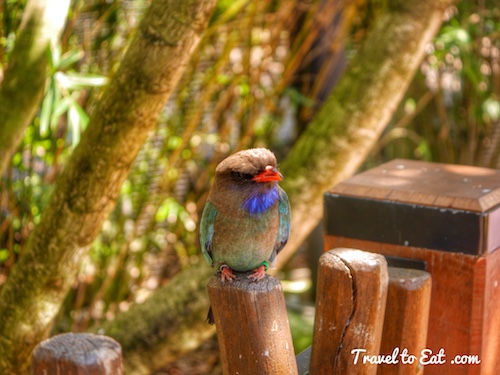
The Dollarbird is also known as the Oriental Dollarbird or the Dollar Roller. There are 11 subspecies of this bird. The Dollarbird is found from eastern Asia, south to New Guinea and Australia. They prefer forests and open country with scattered trees.
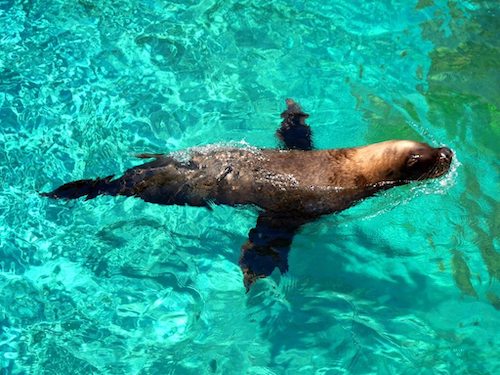
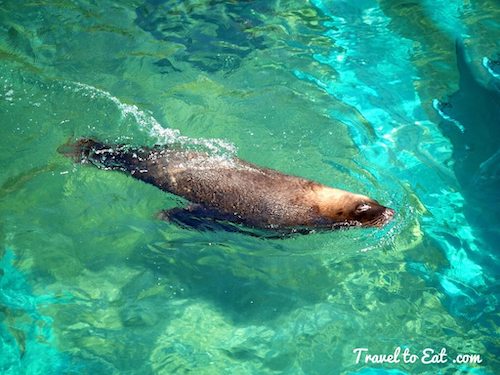
Arctocephalus forsteri, the New Zealand fur seal or southern fur seal, is a species of fur seal found around the south coast of Australia, the coast of the South Island of New Zealand, and some of the small islands to the south and east of there. New Zealand fur seals, Arctocephalus forsteri, like all fur “seals” are actually sea lions (Family Otariidae), and are actually considered rare in New Zealand. These “seals” have pointed noses, long whiskers, and 2 layers of dark brown fur. In New Zealand, Arctocephalus forsteri was hunted for their fur by Polynesians and Europeans for centuries and nearly to extinction by the 19th century. They are now protected by New Zealand’s Marine Mammals Protection Actexternal link and are beginning to recover and re-colonize areas in their pre-exploitation range.
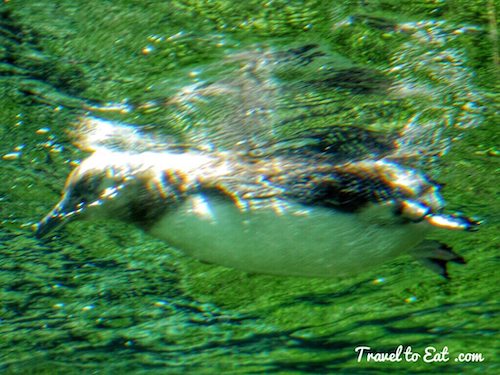
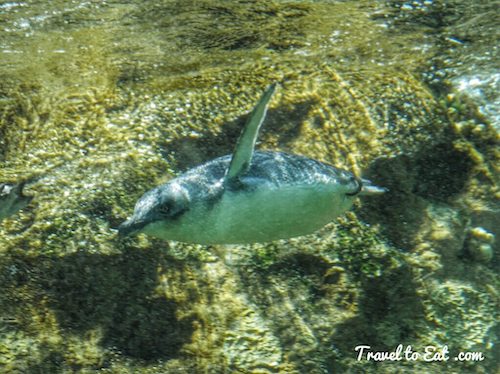
They have quite a collection of penguins, hard to photograph but fun to watch.
Of course this is not a complete or even close to complete list of native animals at the Taronga zoo, these are just the ones available on the day we visited and that I could get decent pictures of. This is a really great zoo, with lots of picturesque views, great landscaping and plenty of children’s play areas. If you are in Sydney, spend the day at the zoo.
[mappress mapid=”70″]
References:
Taronga Zoo Website: http://taronga.org.au/taronga-zoo
List of Animals at Taronga: http://www.ozanimals.com/travel/list-of-animals-at-taronga-zoo-sydney
Tasmanian Devil State Animal: http://www.abc.net.au/news/2015-01-11/tasmanian-devil-nominated-as-official-animal-emblem/6010958
Gray Kangaroos: http://animals.nationalgeographic.com/animals/mammals/gray-kangaroo/
Swamp Wallaby: http://www.redorbit.com/education/reference_library/animal_kingdom/mammalia/1112836320/swamp-wallaby-wallabia-bicolor/
Australian White Ibis: http://www.birdsinbackyards.net/species/Threskiornis-molucca
Wandering Whistling-Duck: http://www.birdlife.org/datazone/speciesfactsheet.php?id=350
Rose-Crowned Fruit Dove: http://www.environment.nsw.gov.au/threatenedspeciesapp/profile.aspx?id=10708
Australian Brush-Turkey: http://www.birdsinbackyards.net/species/Alectura-lathami
Eclectus Parrots: http://www.eclectusparrots.net/
Seal Conservation: http://www.pinnipeds.org/seal-information/species-information-pages/sea-lions-and-fur-seals/new-zealand-fur-seal

